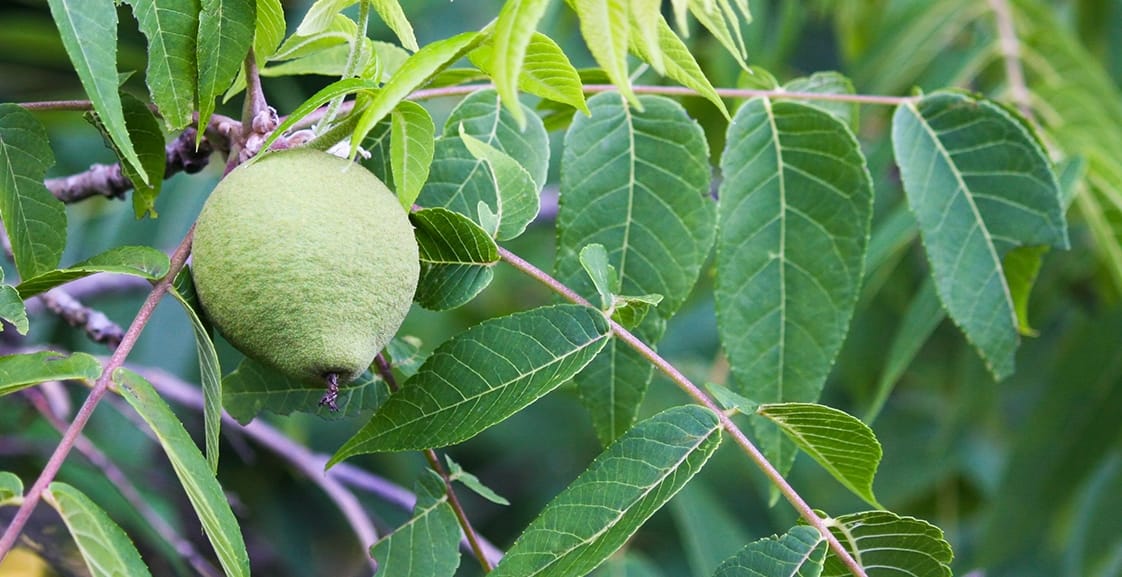
Black Walnut
Juglans nigra
Walnut trees are allelopathic, meaning they excrete a chemical that is toxic to other vegetation, thereby reducing nearby competition.

Chaste Tree ‘Shoals Creek’
Vitex agnus-castus
Also known as ‘monks pepper,’ the peppery-smelling fruit was once thought to lower libido, hence the name ‘chaste tree.’ Oils from this tree have anti-microbial and anti-fungal properties.

Chaste Tree ‘Daytona Heat Dale’
Vitex agnus-castus
This tree is a rare white version of the Vitex tree and is very attractive to butterflies and moths. Its berries smell like pepper and were often crushed to be used as such.

Crape Myrtle ‘Natchez’
Lagerstromia indica x fauriei
Native to India and southeast Asia, crape myrtles have been cultivated to come in every different shape, size and color. Its blooms are used by many species of moths and butterflies for food.

Eastern Redbud
Cercus canadensis
Native to North America, raw or boiled redbud flowers were used by the Native Americans as a food source. Carpenter bees are the primary pollinators for redbuds, and certain species of moth caterpillars, feed on the leaves.

Holly ‘Nellie R. Stevens’
Ilex aquifolium x Ilex cornuta
This holly is a cross between an English holly and a Chinese holly from the cross pollinating of bees. It is named for the schoolteacher who took a few berries on a visit to the U.S. Botanic Garden in Washington D.C. in 1900 and planted them at her Maryland home.

Juniper ‘Brodie’
Juniperus virginiana
This juniper is actually an eastern red cedar and can grow up to 25 feet tall, with bright, feathery foliage.

Live Oak
Quercus virginiana
‘Live’ oak refers to the fact these trees are green during winter. However, they are not a true evergreen and will drop their leaves in spring prior to new leaves emerging. Live oak trees were once the preferred lumber for shipbuilding.

Pecan
Carya Illinoiensis
Native to Mexico and south central United States, this tree is a species of hickory. The word ‘pecan’ comes from the Algonquian word referring to any nut that requires a stone to crack.

Purple Leaf Plum
Prunus cerasifera
Native to southeast Europe and western Asia, this tree belongs to a group of plum trees known as cherry plums. It may produce fruit that ranges in flavor from very tart to very sweet.

Shumard Oak
Quercus shumardii
Native to North America, this drought and pH tolerant oak can live up to 480 years. Used for lumber in cabinetry and flooring, it is superior to other varieties of red oak as a lumber source.

Texas Cedar Elm
Ulmus crassifolia
Native to North America, cedar elm is the most common type of elm tree in Texas. It gets its name ‘cedar elm’ due to its association with juniper trees also known as cedar.

Texas Mountain Laurel
Calia secundiflora
Native to North America, it is a member of the legume or pea family and used only as an ornamental plant. This evergreen has beautiful purple flowers that smell like grape soda. All parts of the tree are highly toxic.

Texas Persimmon
Diospyros texana
Native to Texas, this fruiting tree has sweet, edible, dark purple fruits. Native Americans used the fruit for dye on animal hides. It is a host plant for the caterpillars of Grey Hairstreak and Henry’s Elfin butterflies.

Texas Redbud
Cercis canadensis v. texensis
Native to Texas, this variety of redbud is more drought tolerant and has thicker glossier leaves than its eastern cousin. A member of the pea family, its beautiful flowers attract pollinators.

Yaupon Holly
Ilex vomitoria
Deriving its name from the word ‘yop’ meaning ‘tree,’ the fruit of this evergreen is an important food source for many varieties of birds, armadillo, skunks and raccoons. Native Americans used the leaves in a tea for purification ritual in which they would vomit, hence the name, ‘vomitoria.’
